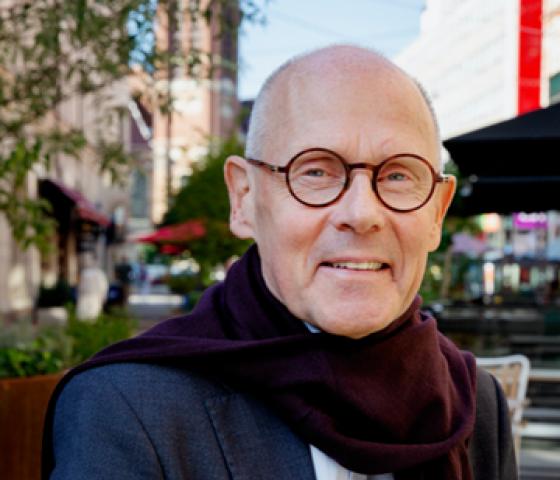
An interview with Christer Larsson: “We have to stop thinking so short-term”
As part of our recently launched book Predicting the Unpredictable – a Nordic Approach to Shaping Future Cities, written by Jonas Gustavsson, President and CEO and Helena Paulsson, Head of Urban Development, we conducted a number of interviews with experts relevant to the book’s subject.

This is an excerpt from the book "Predicting the Unpredictable - a Nordic Approach to Shaping Future Cities".

Christer Larsson, Director of Urban Planning at the City of Malmö 2005–2019, adjunct Professor of Architecture at Lund University and Chair of the Nordic City Network, as well as Sweden’s first National Architect. He recently left his post as Director of Urban Planning for the City of Malmö, one of the most exciting cities in the Nordics, which is ranked fourth on the OECD Innovative Cities Index. In 2014, he was tasked by the Swedish Government with investigating and proposing a new policy for architecture, form and design. The result of the inquiry, the Government Bill Policy for Designed Living Environment forms the basis of Sweden’s new comprehensive architecture policy.
What is a living environment and how does one design it?
“Everything we do must take place somewhere. Life must take place. The spatially organised structure surrounding us is our living environment. In one way or another, this is always designed. It is a matter of making conscious choices. Otherwise, the living environment will be the result of many non-decisions."
"I believe strongly in the power of spatial organisation and it must be done correctly. First one must assess what needs to be done, what values need to be created and what qualities added. It is then up to those of us working in the field to perform a spatial translation. Unfortunately, we often come up short when faced with reality and prioritise the short-term perspective. The housing sector has a great deal of say in this and they represent a short-term quarterly economic outlook. We represent generations. Therefore, we must adopt a hundred-year perspective.”
How do we think more long term from a purely practical standpoint?
“As an example, we must safeguard affordable housing. The homes built in the Million Homes Programme, at one time the lowest rung of the housing ladder, are being renovated. The financial incentives encourage landlords to install expensive, unnecessary additions that raise rents and pass the burden of dependence to the public sector, while residents are forced out. The entire model for collaboration needs to be reviewed. How do we prioritise between building subsidies, housing subsidies and value reductions in the short and long term? There is great development potential here."
"It is also vital that we build a cohesive city. Malmö is geographically integrated but socioeconomically segregated. We must both correct past mistakes and use different methods when building anew. During the 1960s, we built enclaves, each with a different type of housing, laying the foundations for advanced segregation. We are now doing the opposite trying to build out physical barriers and mix forms of
occupancy and activities in urban districts."
"Municipalities have the tools. We can get far with planning monopolies, zoning policies, public utility companies and investment in public buildings. For example, we located a public baths in Kroksbäck, an area with major challenges. When a district is provided with a meeting place that is important for Malmö as a whole, then all of Malmö will come.”
It is difficult for politicians to make truly long-term plans, what should city engineers and property developers be considering? How should we be thinking when building cities for an era of which we know so little?
“At a strategic level, I believe that we need to use scenario techniques so that we can choose our path as late as possible in the process. We need to remain flexible for as long as we can. It is like navigating using coastal beacons. We must choose our course one stage at a time. I also believe that we need to avoid irreversible solutions. Instead of building underground carparks, build parking garages without sloping floors so that the building can be repurposed when needs change.”
What characterises the Nordics from an urban planning perspective?
“All of the Nordic countries share common values that, among other things, have been manifested in long periods of social democracy. The system of maintaining a strong social safety net has provided basic security that gives us the courage to try new things. Malmö has been named the fourth most innovative city in the world. We are also renowned for our sustainability. In Malmö we have adopted the UN Global Goals for Sustainable Development as local goals. The global goals must permeate our control systems. Global issues are also local issues, and local solutions are potentially global and exportable.”
What is your view of the smart city?
“That depends on what meanings we apply to the term. As long as the smart city is not a social city, it is simply a tool. We must see people, see opportunities for democracy and influence. If not, all we have is technology and autonomous cars. Wrongly handled, it will be nothing more than a passing fad. Handled correctly, it can be a tool for achieving the global goals.”
